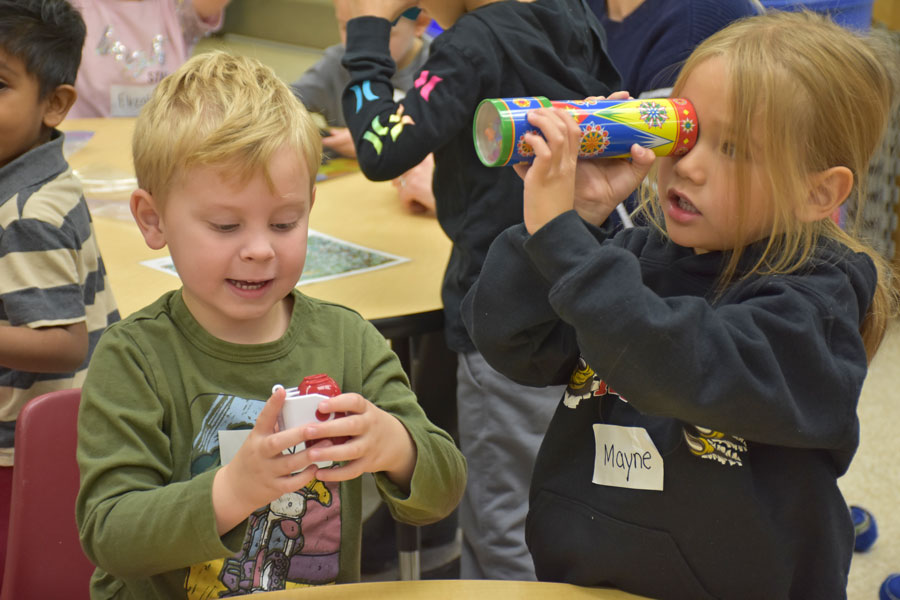ABERFOYLE – Students in Christa Hayes’ kindergarten class came to their senses on Nov. 9 – all five senses actually, as Scientists in School ran workshops for several classes that day.
Indeed, thanks to funding by the Puslinch Optimist Club, all students in the K-8 school will have a science workshop based on their grade and curriculum.
The idea behind Scientists in School is to foster a love and curiosity about science, technology, engineering and math (STEM), said Erin Westman, senior manager of national outreach and central Ontario region.
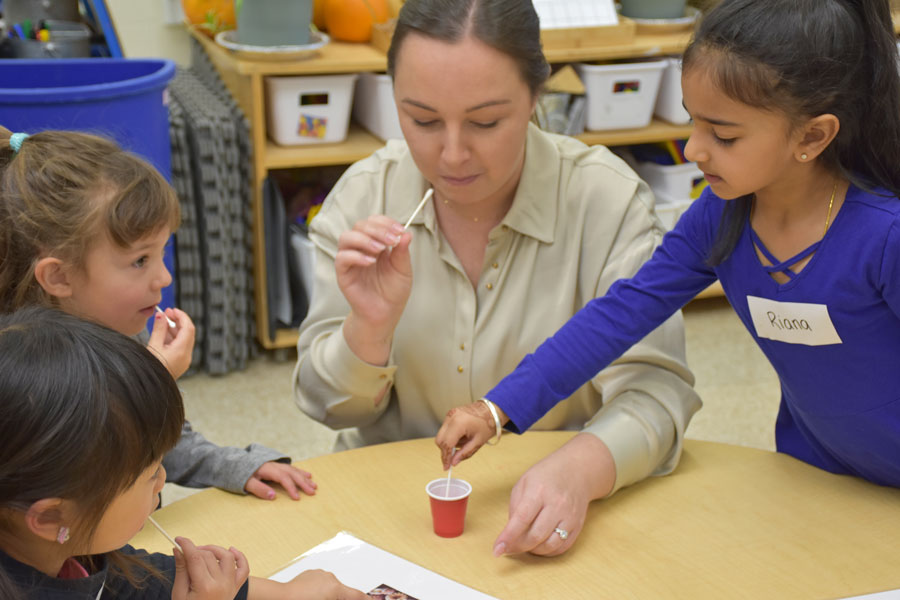
This experiment had students tasting flavours on the end of a Q-tip to decide if they were sour, sweet or salty.
STEM jobs are in high demand but hard to fill, she said, as they generally require a lot of post-secondary education.
These workshops are just a step in the process. But the hope is that many students exposed to science in their early years will want to pursue it later in their lives.
Workshop leaders with the non-profit organization all have a Bachelor of Science degree and enjoy working with children. Many are retired science teachers or have worked in scientific fields.
The common thread among them is a love of science and a desire to spread that love around. Workshop leaders come with a prepared program and kits of materials for students to use.
Teachers select from a list of possible topics and receive pre- and post-workshop material to cement the learning that goes on in the workshops.
Teresa Werely led the workshop “Sense of Wonder” for the kindergarten students at Aberfoyle.
Students already seemed to know what the five senses are – sight, touch, smell, hearing and taste – and were keen to get going on the experiments.
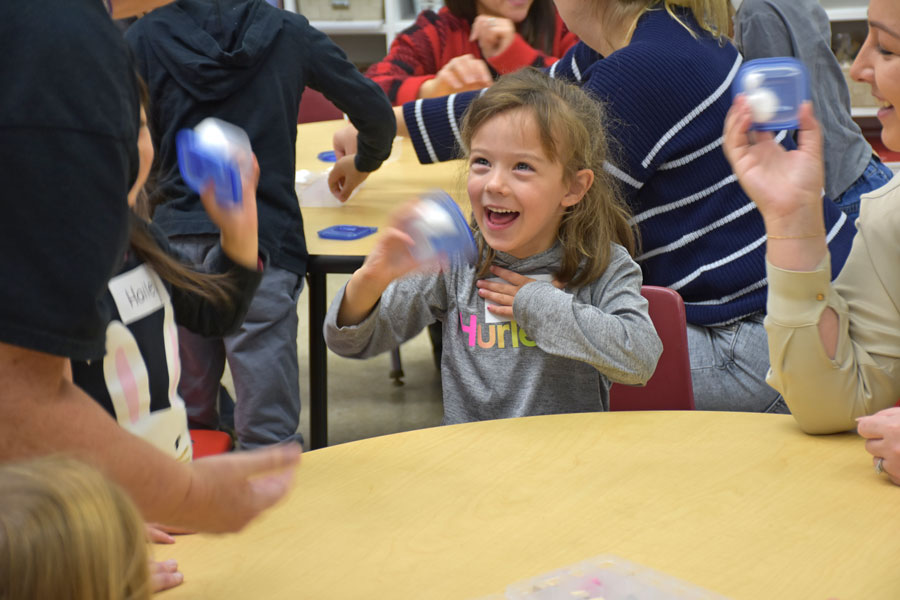
Students put objects in plastic containers, gave them a shake, and decided if they made a loud or quiet sound.
Touch: each student brushed a paint brush on their cheek, hand, elbow etc. and described what that felt like. Some children discovered they had ticklish elbows.
Then they felt inside a “mystery pouch” and tried to figure out what was inside the bag just by touch.
Sound: Werely played pre-recorded sounds on her cell phone and students guessed what they were hearing. They then each got a small container and placed objects in it, predicting ahead of time if the sound would be loud or quiet when they shook the container.
Smell: Students learned that scientists don’t just shove their noses into things to smell them. It can be dangerous. Rather they “waft” odours toward their noses so they can smell it safely.
Students were handed little containers with cotton balls that had been soaked in a fragrance. They wafted those smells toward their noses and tried to figure out what they were smelling. Not everything smells good, said one little boy as he plugged his nose.
Taste: Westman explained taste buds on your tongue are what tells if something tastes sweet or sour. Students checked out the bumps on their tongues.
Then they were handed Q-tips that had been dipped in different flavours and tried to guess what they were tasting. Super salty did not go over well.
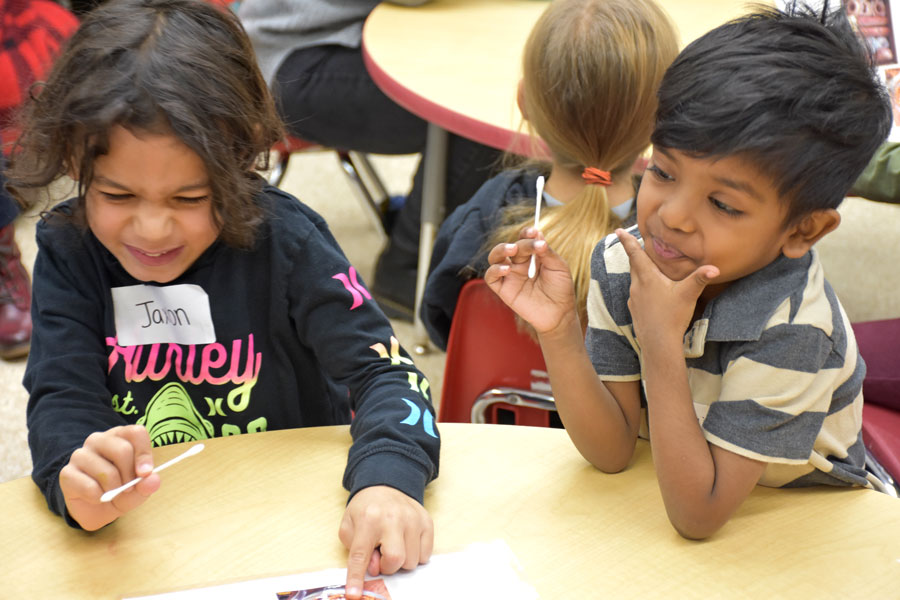
These two students agreed that the salty taste was yucky.
Sight: There were a few experiments for the students. First, drop a pom pom into a cup. Then cover one eye and drop a pom pom into a cup.
“See if your depth perception changes,” Werely advised the students.
They also had fun using binoculars, magnifying glasses and kaleidoscopes to see how their sense of sight changes with different tools.
It was 90 minutes of exploration, chattering, excitement and engagement.
Over the next little while, all classes at the school will be visited by a scientist with a program geared to their curriculum.
“Children, families and community is our focus,” said Optimist president Gregg Allan.
“What I saw today is contageous – and priceless. Thanks to the community supporting us, we can support the school.”
Hayes said the day was a great success, with Werely leading great discussion and the students engaged in active learning.
“As educators we are always trying to find new and innovative ways to teach curriculum expectations to the diverse learning needs of our students,” Hayes said.
“Today’s presentation with Scientists in Schools covered many different expectations in such a short period of time, provided fun play-based activities for every child, challenged their critical thinking skills and truly nurtured a love for scientific discovery.
“We would highly recommend this program to all teachers and hope that we will have more opportunities in the future.”
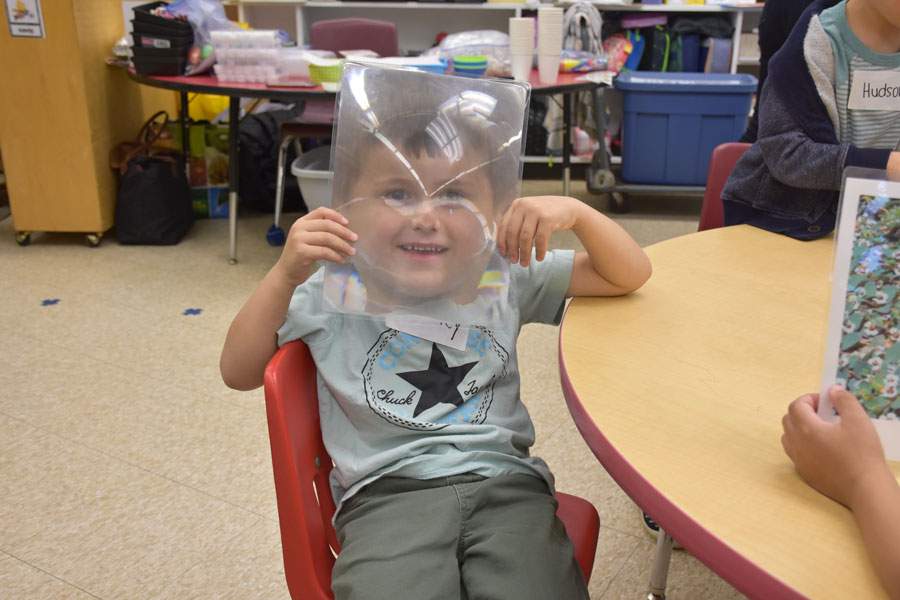
This boy enjoyed holding a magnifying screen in front of his face and making funny faces.




